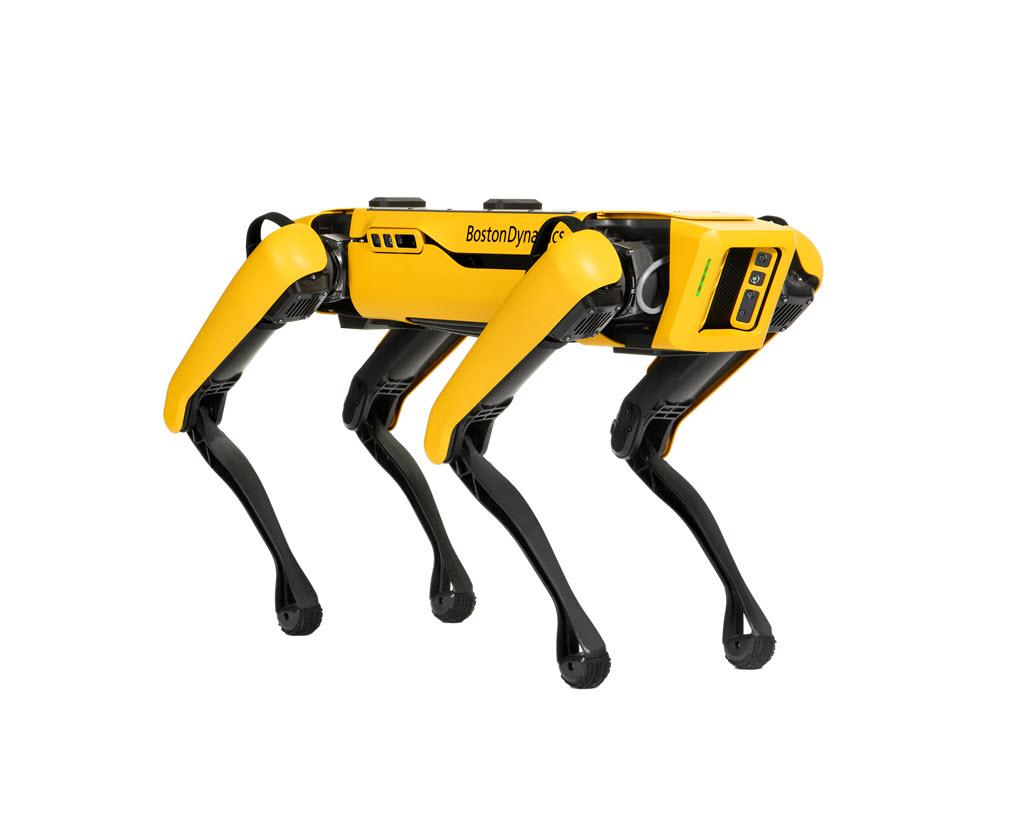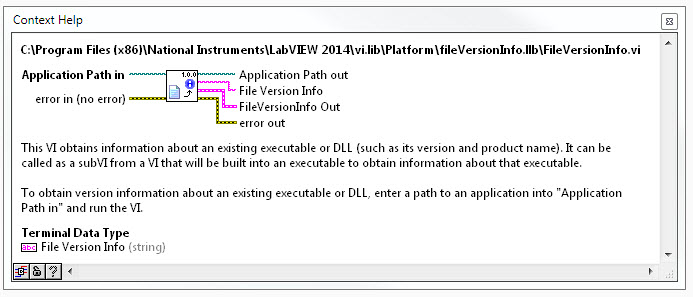
Phillip Brooks
Members-
Posts
914 -
Joined
-
Last visited
-
Days Won
53
Content Type
Profiles
Forums
Downloads
Gallery
Everything posted by Phillip Brooks
-
I had a case years ago where I needed to create a solution that would receive three UDP streams over three distinct Ethernet wires on a single LabVIEW station at 100Hz. I used queues to receive the data and used VI server to start three processing loops that read from each queue. It worked fine. The second requirement was to optionally receive a single stream at 1200 Hz. There was no hardware at the time to send the data to my application. I struggled for a while, and finally used a NI-6509 DIO board in a second computer that was connected to a function generator. I used a timed loop that was triggered by an input to the 6509. I interpolated a 16 hour 100 Hz log to create a 1200 Hz data set. I used the function generator with a square wave to trigger a timed loop that sent the UDP data. My application logged the high-speed data with no data drops; the only thing I needed to do was increase the UDP receive buffer size on the application side. You can definitely get there, but will need some timed hardware resources.
-
The native LabVIEW Unflatten From JSON Function might be of use. I used a Salesforce REST API that returned JSON. There were numerous string and numeric fields that returned as NULL. If you use the native LV function and change 'default null elements?(F)' to true and set 'enable LabVIEW extensions? (T)' to false, you can get the default values assigned in your input type & defaults cluster. https://zone.ni.com/reference/en-XX/help/371361R-01/glang/unflatten_from_json/
-
We should be getting TLS support based on this: https://forums.ni.com/t5/LabVIEW-Idea-Exchange/SSL-TLS-Support/idi-p/3314187 Maybe 2020 is the year!
-
How many tons of coax, cat5 or fiber have YOU buried inside a test fixture / station?
- 1 reply
-
- 1
-

-
I contributed a GZIP compress/decompress function on the NI forums many years ago. That function used a MemoryStream instead of a file. I added the .NET reflection functionality from above to the original decompress VI based on a MemoryStream. https://forums.ni.com/t5/Example-Programs/GZIP-compress-uncompress-of-string-using-NET/ta-p/3507908
-
Speed up loopback adapter
Phillip Brooks replied to Cat's topic in Remote Control, Monitoring and the Internet
Many higher-end NICs offer a fetaure called a TCP Offload Engine. These NICs perform much of the processing that takes place on the CPU. That may be the difference here. https://en.wikipedia.org/wiki/TCP_offload_engine -
Insert multiple rows into database
Phillip Brooks replied to Gael Anquetil's topic in Database and File IO
-
And you got none...
-
Sharing serial device from Raspberry Pi to VISA?
Phillip Brooks replied to Sparkette's topic in LabVIEW Community Edition
ser2net - shares a serial interface as a telnet compatible socket. Here's an example setup: https://garettmd.com/create-a-console-server-with-a-raspberry-pi.html https://www.jpaul.me/2019/01/how-to-build-a-raspberry-pi-serial-console-server-with-ser2net/ -
LabVIEW NXG - when will we start using it
Phillip Brooks replied to 0_o's topic in Development Environment (IDE)
Killer feature: SSH 😆 -
More like the Hamburger Trick
-
The State of OpenG (is OpenG Dead?)
Phillip Brooks replied to Michael Aivaliotis's topic in OpenG General Discussions
EasyXML Toolkit -
I thought I replied to your DM but I don't see it in my mailbox now. From what I can tell, the rectangular bar code in your image is classified as Data Matrix, ECC200, DMRE. I used Bartender to create an ECC200 type label and could NOT decode it with ZXING or the on-line decoder. ( https://zxing.org/w/decode.jspx ) I WAS able to decode both your image and my Bartender rectangular bar code with a Datalogic GD4400 scanner. I tried updating my ZXING assembly from the old 14.0 version to the latest I could easily find (16.4) but it still didn't decode.
-
Yes. 4 years ago, I took my current job because the lone engineer supporting the manufacturing of my product suddenly left. I believe there were multiple reasons, but after I got involved I realized that I would have probably done the same if I was in his shoes. There was 10 test stations running 5 test sequences for three specific products. The test system was based on an older version of CVI / TestStand with run time deployment that originated at a consulting company. The product under test has some diagnostics, but much is tested by configuring it as a customer would. The product software changed over time (as would be expected) and the tests stop working. Sometimes the changes demanded a change to the CVI code, but the previous engineer had no experience. Solution? Replace the functions that don't work with LabVIEW VIs! Move forward a couple of years and introduce new test requirements, new web based interfaces and the test system turned into quite a mess of curl, perl, CVI, LabVIEW and TestStand RTE. It got so bad that the product OS was locked down to a specific version of software and then upgraded at the end to the shipping software. CVI code would crap out when IT would install Windows updates (DLL hell). Test times per UUT went from an original 30 minutes were now almost two hours. The product ended up being tested twice just so we could install the latest software before shipping. First pass yield was 80% with the primary cause being test execution failure; timeouts exceeded and Selenium/Firefox step failures because of JAVA updates or an operator changing the screen resolution. This is where I came in. I dubbed the existing system "The Jenga Pile". Touch anything and it all came crashing down. It's easy to say that this is an implementation issue. My manager and I decided that we needed to move to a current version of Windows / LabVIEW / TestStand, get rid of cludges like Selenium and curl and rewrite the tests from scratch based on the latest version of the product software. I was 6 months and 75% or so into the project when the only early advance of the new product software was given to me. Many of my tests were based on a telnet session to the product. Telnet was now REMOVED from the product! (not disabled, but REMOVED - security issues ). I needed to change to SSH or use the serial console port. LabVIEW and SSH (don't get me started)?!?! I was already done with my test coding and intended to spend the last two months tweaking the TestStand environment and creating my first RTE deployment. I used SSH.NET here and there where necessary to recover. After taking 4 weeks to rework the telnet related issues, I found I could not reliably create and install TestStand deployments. SSH.NET would not work. Oops! Did I mention I had never created an RTE deployment before? My previous employer used debug deployment licenses and I never once dealt had to deal with the RTE. Now I know why. I told my manager to cancel the plans for upgrading our 10 deployment licenses and spent 4 weeks in overdrive creating my own crude sequencer and report tools. I saved the cost of NI upgrades, met the deadline and made my life easier down the road. Changes now only require compiling a new EXE and dropping it on the test stations. I have a UI that I can change, deploy in minutes and I haven't had to think about Process Models or creating 100s of MB of deployment packages for simple changes. It is not actor based or even very modular at this point. I love the promise of TestStand, but I'm not controlling a super-collider and certainly not doing rocket science. Give me TestStand Lite (google it) as an actor where I can register some LabVIEW UI elements to monitor and control execution. Give me TestStand Lite, limit the engine to running LabVIEW VIs and include the engine in the Professional edition. The TestStand Lite sequence editor should integrate seamlessly into the LabVIEW project.
-
How to tell if USB camera has failed/disconnected
Phillip Brooks replied to Neil Pate's topic in Machine Vision and Imaging
Isolation? I've always wanted a reason to check this out: optical USB cable... https://www.corning.com/optical-cables-by-corning/worldwide/en/products/usb-optical-cables.html You would need to provide your own power to the camera at the far end. -
lies, damn lies, and VI help documentation
Phillip Brooks replied to torekp's topic in LabVIEW General
Someone reported a similar issue on the dark side. Are you using typedefs? https://forums.ni.com/t5/LabVIEW/chm-help-file-and-executable/m-p/2703303#M802558 -
lies, damn lies, and VI help documentation
Phillip Brooks replied to torekp's topic in LabVIEW General
Don't use this functionality, but the NI Doc reference has a note: Maybe the exe is expecting to find the help file in the support directory? -
You have to be in the control editor. Drop a control on a VI FP, select the FP control and use Edit -> Customize Control... from the pull-down. Now, in the control editor, select the control and select Window -> Show Parts Window
-
I would suggest posting on the NI forums and seeking out Mark Yedinak. He's works at Zebra and has been answering LabVIEW / ZPL related questions for a long time.
-
Automatically Adding Build Date To Front Panel
Phillip Brooks replied to Taylorh140's topic in LabVIEW General
- 8 replies
-
- configuration
- lvscripting
-
(and 1 more)
Tagged with:
-
Are the client and server both running LabVIEW? Do you have tftp client or server available on either of the systems? tftp is UDP based, but takes care of the handshaking. https://en.wikipedia.org/wiki/Trivial_File_Transfer_Protocol
-
https://medium.com/@cscalfani/goodbye-object-oriented-programming-a59cda4c0e53#.4476pk9xq
-
I remember reading about a VISA Python library a couple of years ago. Might make traditional instruments easier to interface to... https://pypi.python.org/pypi/PyVISA ( edit: Looked at PyGMI and it uses PyVISA and PySerial )



